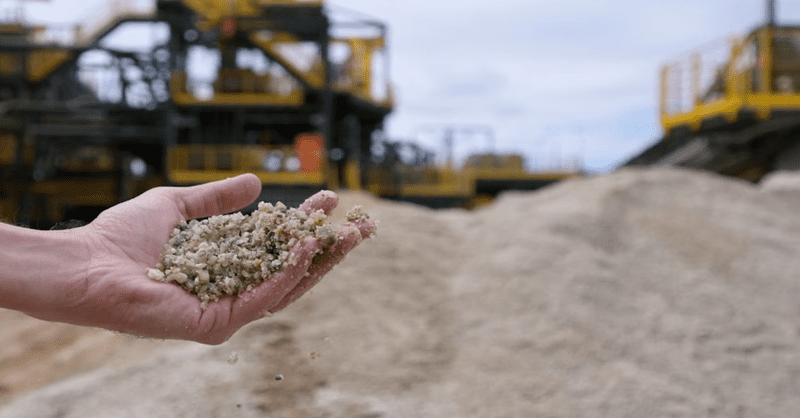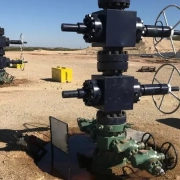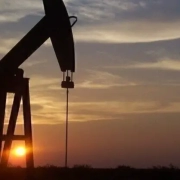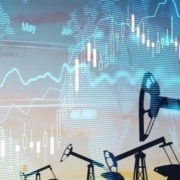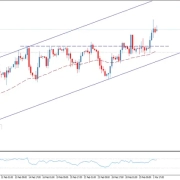⚠️ IMPORTANT LEGAL DISCLAIMER:
The information provided on this page related to Lithium and Critical Minerals is for general informational purposes only and does not constitute legal, financial, or investment advice. Oil and gas laws, mineral rights regulations, and royalty structures vary significantly by state and jurisdiction. While we strive to provide accurate and up-to-date information, no guarantee is made to that effect, and laws may have changed since publication.
You should consult with a licensed attorney specializing in oil and gas law in your jurisdiction, a qualified financial advisor, or other appropriate professionals before making any decisions based on this material. Neither the author nor the publisher assumes any liability for actions taken in reliance upon the information contained herein.
Uncovering the Growing Role of Lithium and Critical Minerals
The global energy landscape is rapidly evolving. While traditional oil and gas resources have long served as the foundation of industrial growth, the future is increasingly being powered by lithium and other critical minerals. These essential elements are vital to the production of clean energy technologies, including electric vehicles, renewable power systems, battery storage, and advanced electronics.
As global efforts to decarbonize intensify, lithium, cobalt, nickel, and rare earth elements are gaining strategic importance. The shift is not merely technological—it is also economic, political, and environmental. These minerals are now considered critical to national security, industrial competitiveness, and sustainable development.
Understanding Why Critical Minerals Matter in Energy Evolution
Critical minerals are essential inputs for modern technologies. From wind turbines and solar panels to smartphones and energy storage systems, they are the building blocks of the green economy. Lithium is central to lithium-ion batteries; cobalt and nickel enhance battery stability and energy density; rare earths are required for magnets used in electric vehicle motors; and copper is critical for electrical grids and conductors.
These materials support global ambitions to reduce greenhouse gas emissions and transition to cleaner, more sustainable energy sources. Countries around the world are investing heavily in securing stable supplies of these resources, signaling a monumental pivot away from fossil fuels.
The Strategic Geopolitics of Critical Mineral Supply
Unlike traditional oil and gas reserves, critical mineral supply chains are highly concentrated and geopolitically sensitive. A few countries dominate production and processing, creating vulnerabilities for nations dependent on imports.
China plays a dominant role in processing lithium, cobalt, graphite, and rare earth elements. To reduce reliance on single-source suppliers, governments are seeking to diversify their mineral supply chains through domestic mining, international partnerships, and strategic stockpiling.
In Latin America, countries like Chile and Argentina are expanding their lithium extraction capacity. Australia is emerging as a global leader in critical mineral production. The United States, Canada, and members of the European Union are implementing policies to increase local extraction, refining, and recycling to mitigate geopolitical risks.
The Central Role of Lithium in the Energy Transition | Lithium and Critical Minerals
Lithium has become the poster child for the clean energy revolution. It powers lithium-ion batteries used in electric vehicles, grid storage systems, and portable electronics. The demand for lithium is accelerating as electric mobility gains momentum across global markets.
Much of the world’s lithium is found in mineral-rich regions like South America’s Lithium Triangle, as well as in Australia, North America, and parts of Africa. Governments and private companies are investing in new mining projects and refining operations to meet the explosive growth in demand.
However, lithium mining raises environmental concerns. Extracting lithium from brine and hard rock consumes large volumes of water and can lead to ecosystem degradation. Sustainable extraction practices and tighter regulations are essential to balance economic opportunity with environmental protection.
The Vital Importance of Other Critical Minerals
While lithium garners significant attention, other critical minerals play equally crucial roles in the energy transition:
- Graphite is essential for battery anodes and is a key component in energy storage technology.
- Cobalt enhances the stability and lifespan of batteries but raises ethical concerns due to mining practices in certain regions.
- Nickel improves battery energy density and is increasingly used in new battery chemistries.
- Rare earth elements, such as neodymium and dysprosium, are essential for high-performance magnets in electric motors and wind turbines.
- Manganese and copper are vital for battery components and electrical infrastructure.
The supply and demand dynamics of these minerals are becoming critical issues for global supply chains, especially as clean energy targets become more ambitious.
Environmental, Social, and Governance Challenges
Mining and processing critical minerals pose substantial environmental and social challenges. Water use, land disruption, and toxic waste are common concerns, especially in environmentally sensitive or arid regions. Local communities and Indigenous groups are often impacted by extraction operations, raising concerns about land rights, displacement, and ecological harm.
There are also labor issues, particularly in regions where artisanal or small-scale mining is prevalent. In places like the Democratic Republic of Congo, cobalt mining has been associated with unsafe working conditions and child labor. These risks demand more stringent governance, transparent sourcing practices, and adherence to environmental and social standards.
Sustainable development in the critical minerals sector requires collaboration between governments, industry, and civil society to ensure that extraction does not come at the expense of people or the planet.
Recycling and Circular Economy as Strategic Paths Forward
One of the most promising solutions to the critical mineral supply challenge is recycling. Recovering materials from used batteries and electronic waste can reduce dependence on new mining operations and mitigate environmental impacts.
Recycling technologies are improving, but infrastructure remains limited in many regions. Government incentives, standardized regulations, and investment in recycling facilities are crucial for building a circular economy. By designing products for recyclability and promoting extended producer responsibility, nations can reduce mineral waste and improve long-term supply resilience.
Recycled materials are also less environmentally damaging, offering a lower carbon footprint than primary extraction. Scaling up recycling is a key component of a sustainable mineral future.
Emerging Projects and Infrastructure Developments
Around the world, governments and companies are launching initiatives to boost critical mineral capacity. Companies are making strategic investments in exploration, extraction, refining, and recycling.
Countries are creating critical mineral strategies to prioritize self-sufficiency and economic security. Infrastructure developments include new lithium mines, cobalt processing plants, and rare earth separation facilities. Several energy and mining companies are entering partnerships to develop integrated supply chains from raw material to final product.
Public-private collaborations are also increasing to ensure alignment with climate goals and supply chain resilience. These investments are shaping the future of clean energy and providing opportunities for new economic growth beyond fossil fuels.
Charting the Path to a Sustainable Mineral Future
To create a secure and sustainable critical mineral supply chain, a multi-pronged approach is required:
- Diversification: Encouraging exploration in underdeveloped regions and reducing overreliance on a few major suppliers.
- Sustainability: Adopting environmentally friendly extraction methods and minimizing the ecological footprint of mining operations.
- Transparency: Enforcing responsible sourcing and requiring traceability of minerals through the supply chain.
- Innovation: Investing in alternatives and substitutes for scarce minerals and improving recycling and recovery technologies.
- International Cooperation: Strengthening alliances and trade agreements to foster resilient and ethical mineral supply networks.
Policymakers must recognize that critical minerals are not just resources—they are strategic assets that will shape the next generation of global development.
The Emerging Strategic Frontier Beyond Oil and Gas | Lithium and Critical Minerals
The rise of lithium and other critical minerals marks a profound shift away from the oil and gas paradigm that has dominated global energy systems for over a century. These minerals are powering the energy transition, enabling cleaner technologies, and redefining geopolitical power structures.
Clean energy technologies, such as battery storage, electric mobility, solar panels, and wind turbines, require critical minerals, unlike oil and gas. Their value lies not just in energy generation, but in energy transformation.
As nations accelerate toward net-zero goals, lithium and critical minerals are becoming cornerstones of national security, economic competitiveness, and sustainable development. The shift from hydrocarbons to minerals is not simply a change of fuel—it is a transformation in how societies produce, store, and consume energy.
Lithium and critical minerals are driving the future of global energy, marking a fundamental departure from traditional oil and gas dependence. These elements are essential for clean energy infrastructure, electrification, and the digital economy. To balance their extraction and use, we must consider sustainability, ethical sourcing, and environmental responsibility.
Mineral-rich nations have a unique opportunity to lead the transition by building resilient, inclusive, and green supply chains. Stakeholders across the public and private sectors must collaborate to ensure that this mineral-powered transformation supports long-term prosperity and planetary health.
As the world looks beyond fossil fuels, the story of lithium and critical minerals is only just beginning—and it will shape the course of the twenty-first century.
Do you have any questions related to Lithium and Critical Minerals? Feel free to contact us here.

